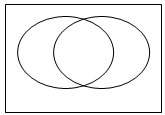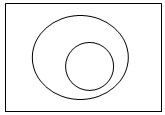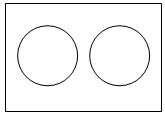Suggested Activities
Students explore various perspectives of Canadian national identity by representing and interpreting the vision of assigned Canadians from diverse backgrounds.
A. Design a visual to represent the vision of national identity of your assigned person.
Prepare diverse profiles
Ask students to research, individually, assigned Canadians to prepare a profile. You may want to provide students with brief profiles of Canadians with diverse backgrounds. See Possible Web Sites for Profiles of Canadians (Background Information). Alternatively, invite students to interview an assigned individual face-to-face or online.
When assigning Canadians to profile, consider including representatives with the following backgrounds:
- leader of an Aboriginal community
- Canadian international business leader
- Francophone living outside of Québec
- Francophone living in Québec
- Acadian
- Maritimer
- Westerner
- African Canadian
- recent immigrant
- Ontarian
- rural mayor/reeve
- urban mayor/councillor
- Council of Canadians member
- representative from the Dominion Institute
- representative from the Parkland Institute
- contemporary religious leader—Christian, Jewish, Muslim, other
- members of various visible/invisible minority groups
- feminist
- person with a disability
- Canadian living abroad or having travelled extensively.
To structure student research, you may want to adapt the Character Profile chart in Collecting Information (Support Material).
Explore features of national identity
Invite students to explore a range of concepts related to a person's or group's national identity, such as pluralism, multination model, separatism, regionalism, Aboriginal self-determination, global leadership and North American integration. Provide definitions of these terms or encourage each group of students to research attributes and examples of one of these concepts. Arrange for the groups to explain their term to the class. After the presentations, determine, as a class, where toplace each term on a continuum ranging from Supports a Single, Unique National Identity to Supports Diverse, Multi-dimensional, Pluralist Canadian Identities.
Compare characteristics
Invite students to compare the characteristics of their assigned figure's vision with the identity concepts explored above. Provide students with the three options represented in the Venn diagrams below and explain how they differ. Ask students to select the format that best represents the relationship between their vision and that of their assigned figure. Direct students to draw the most appropriate Venn diagram and record the features of their vision and that of their assigned person in the proper spaces.
Further explanation on the use of this graphic tool is found in Venn Diagrams (Support Material).
 |
Suggests the visions have some unique and some common features |
|
 |
Suggests all features of one vision are represented in the other vision |
|
 |
Suggests no common features between the two visions |
|
Represent the vision of a historical figure
Invite students to represent the vision of their assigned person using a visual representation, such as a coat of arms, political cartoon, drawing or electronic slide show. Provide students with examples of personal shields, such as the Governor General's coat of arms (see References).
For instructions on teaching and assessing the tools for creating visual representations, see Creating Persuasive and Effective Visuals (Modelling the Tools).
B. Interpret the vision of national identity represented in a visual presentation.
Use a gallery walk to analyze a vision of Canadian identity
Ask students to participate in a gallery walk to examine the representations of Canadian identity created by others. Encourage students to identify in detail the concepts, e.g., separatist, regionalist, pluralist, represented in one of the visual presentations.
To structure and assess this activity, you may want to adapt one of the charts and assessment rubric in Supporting Conclusions (Support Material).
Extension: Represent personal vision of Canadian identity
Invite students to review the concepts that best describe their own vision and to create another visual, e.g., coat of arms, cartoon, multimedia collage, drawing or computer-aided art, that reflects their personal vision of Canada. Post these visuals around the classroom.
|










